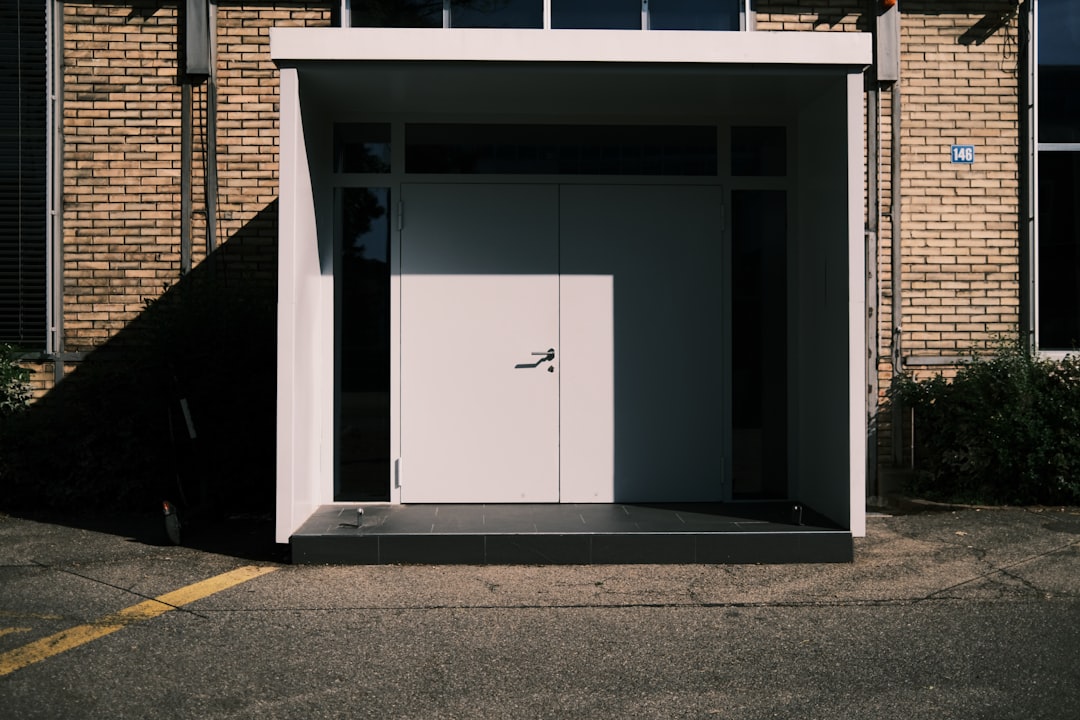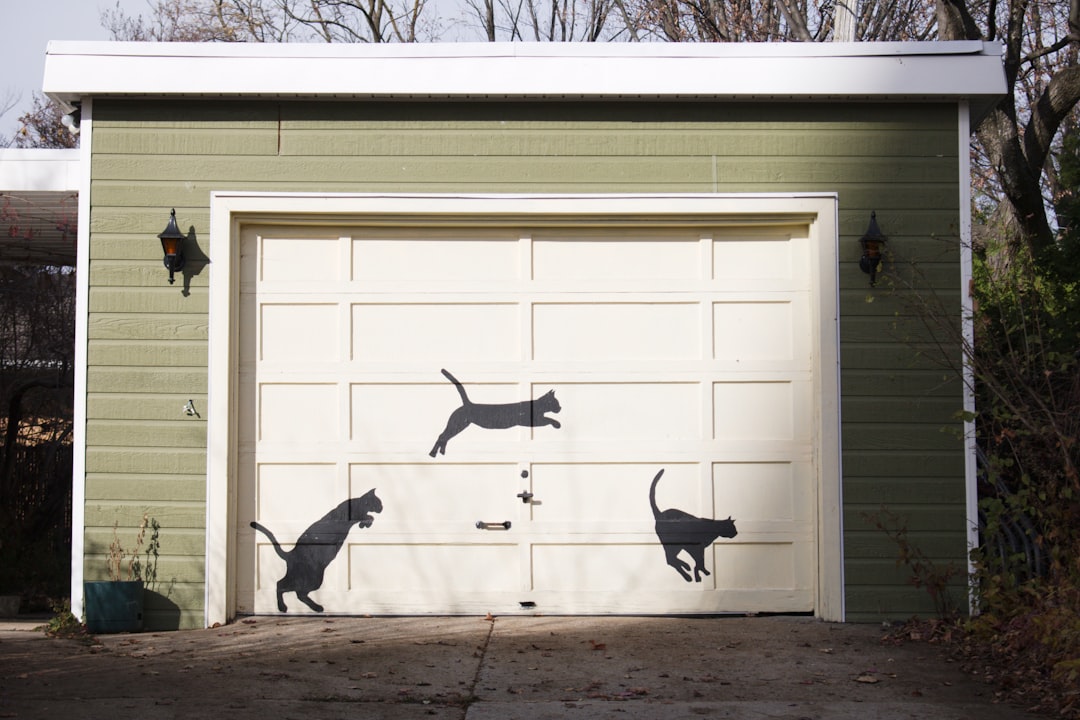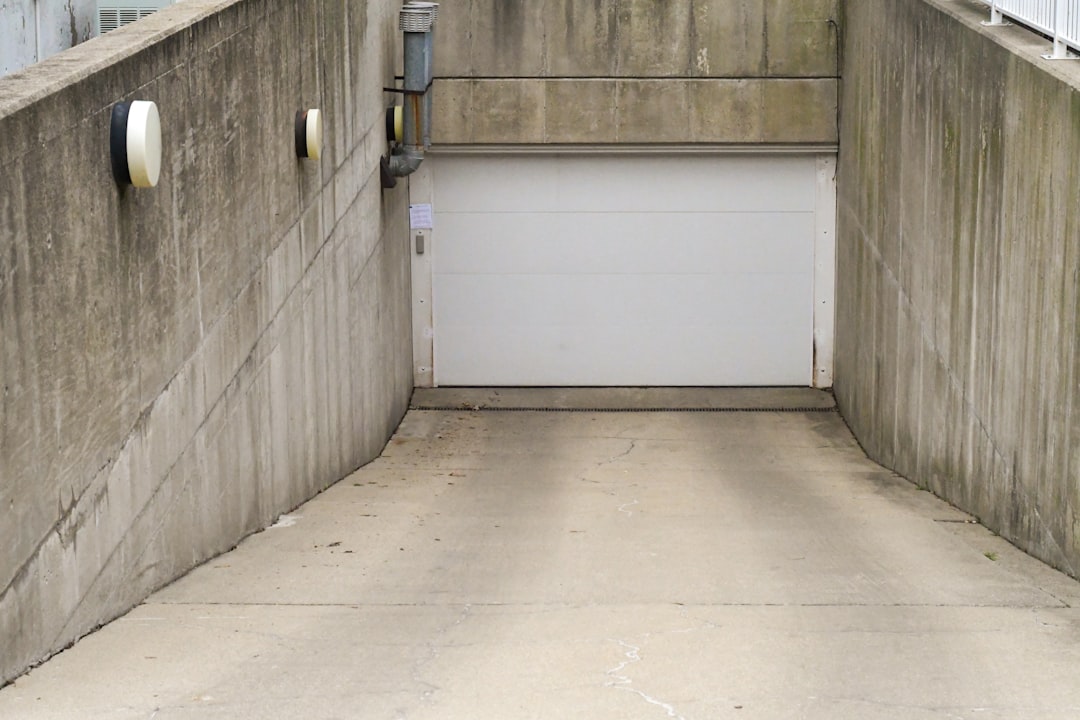

Engage prospects with a scan and streamline customer engagement with FREE QR code marketing tools by Sona – no strings attached!
Create a Free QR CodeFree consultation

No commitment

Engage prospects with a scan and streamline customer engagement with FREE QR code marketing tools by Sona – no strings attached!
Create a Free QR CodeFree consultation

No commitment
In today’s digitally driven world, QR codes have evolved from a novelty to a strategic powerhouse in bridging offline engagement with online action, as seen in QR codes in marketing. For garage door installation services, QR codes offer a seamless, effective way to connect homeowners and property managers with installation solutions, service scheduling, and post-installation support, all without an app or complicated setup. One scan can move a prospect from a yard sign or door hanger directly into a booking flow or maintenance guide.
Whether a homeowner is comparing materials, trying to understand garage door installation cost, or looking for a quick way to schedule a smart opener installation, QR codes reduce friction and clarify next steps. They also provide the missing attribution layer for offline touchpoints like vehicle wraps, direct mail, and invoices, so high-value interest no longer disappears. With dynamic codes and intent-aware destinations, you can measure engagement, optimize placements, and turn fleeting moments of curiosity into qualified opportunities. See Sona QR’s product overview.
With the right deployment, QR codes can support everything from instant quotes to post-service reviews, warranty lookups, and remote diagnostics. For teams worried about missed opportunities or anonymous interactions that never reach the CRM, QR-driven journeys deliver measurable improvements in lead quality, offline-to-online conversions, and customer satisfaction. This guide shows exactly how to operationalize QR in garage door installation services for tangible gains in pipeline, reputation, and lifecycle value.

QR codes bridge the gap between physical touchpoints and digital outcomes, giving garage door providers a reliable way to capture intent at the moment it appears. Many businesses still rely on analog processes like printed brochures, paper estimate forms, and generic phone numbers on door hangers. These materials create awareness, yet they rarely capture data or drive immediate action. A QR code turns a static touchpoint into a trackable onramp to booking, education, or support.
To achieve enhanced access and engagement, start by mapping every physical surface that prospects encounter to a clear call to action. Vehicle wraps can drive quote requests, invoices can collect reviews, and warranty stickers can connect to maintenance scheduling. Each scan becomes a measurable event that enriches your CRM and activates a follow-up workflow. With platforms like Sona QR, teams can generate dynamic codes, update destinations without reprinting, and unify scan activity with sales and marketing tools for real-time optimization.

The garage door installation market is filled with offline moments that signal intent but are hard to capture. A homeowner may notice your wrapped truck, pick up a postcard, or receive a final invoice after an installation. Without a direct digital pathway, those moments often end without measurable engagement. QR codes solve this by making the next step immediate and effortless, while providing data that improves attribution and follow-up.
They also address the need for speed. Homeowners want help quickly when a spring breaks or a smart opener loses connectivity. No one wants to type a long URL or sit on hold. A QR code placed where questions arise, like on the inside of the garage door or on an opener manual, turns confusion into quick resolution. For the business, every scan is a signal of intent and timing, which informs smarter routing, staffing, and marketing investments.

Garage door providers serve a mix of urgent needs and planned upgrades, which calls for QR formats that are fast, flexible, and context aware. The most effective formats support booking, education, and retention. Companies that standardize a small set of QR types can scale usage across vehicles, mailers, invoices, and packaging with consistent training and predictable outcomes.
Dynamic QR codes are especially useful in this vertical. They let teams update destinations quickly, run A/B tests on calls to action, and tag scans by campaign without reprinting. That capability turns each physical placement into a long-lived asset. With Sona QR, you can generate and manage all formats in one place and connect scans to downstream analytics.
Growth often stalls not from lack of demand but from unseen leakage in the buyer journey. Prospects may notice your billboard, clip your brochure, or talk with a technician, yet never make it into your CRM. QR codes bring those moments online, creating trackable signals and clear paths to action that extend across the customer lifecycle. See garage door marketing tips.
Focus first on placements that already attract attention and reside near the problem you solve. The closer your QR code sits to the customer’s moment of need, the higher your scan rate and conversion. Test multiple placements, compare scan performance, and refine based on what your analytics show.

Garage door providers navigate a wide range of customer intents: emergency repair, planned replacement, new home builds, and smart upgrades. QR codes let you tailor the next step to each scenario while measuring impact. The use cases below map common interactions to clear, measurable outcomes, so your team can prioritize deployments that boost revenue and satisfaction.
Each use case should be paired with a clean landing experience. Keep forms short, enable click-to-call, and highlight trust signals such as certified technicians, warranty terms, and financing. With dynamic QR and Sona QR’s analytics, you can test variations and improve performance over time.
Every QR scan carries context: where it happened, when it happened, and what call to action was presented. By deploying distinct codes at different touchpoints, you can auto-segment your audience and retarget with precision, see Sona’s Playbook titled Intent-driven retargeting: Driving high-impact campaigns with first-party intent signals.
Use Sona QR to generate unique codes by placement and purpose, then sync scan data to your CRM and ad platforms. Over time, you will build a deep library of intent signals that drive integrated campaigns across email, SMS, and paid media. The result is a more efficient spend and a faster path to booked jobs.
QR codes play the role of connective tissue across your offline and online programs. They enable you to measure the impact of print, signage, and field service while fueling digital campaigns with fresh, high-intent signals. When QR activity flows into your central dashboard, you can see how a homeowner moves from a neighborhood flyer to a website visit to a booked consultation.
Align QR placements with your existing channels and creative rhythm. For garage door installation services, that often means vehicle wraps, door hangers, direct mail, showrooms, job site signage, and local events. Each of these becomes a measurable acquisition lever when a QR code bridges the offline moment to a digital action.
A clear execution plan ensures that QR efforts move beyond novelty and into repeatable, revenue-driving operations. The steps below translate strategy into tangible work, helping your team deploy, measure, and iterate with confidence.
Start with one or two goals that directly impact revenue or reputation. For example, focus on Scan to Get an Estimate for vehicle wraps and Scan to Leave a Review on invoices. Define how you will measure success, such as scan volume, scan-to-lead rate, and booked appointments.
Consider seasonality and urgency. In peak repair months, prioritize emergency service codes with click-to-call fallback. During planned replacement seasons, promote financing, style guides, and showroom appointments. Keep each use case tightly scoped so your landing experience matches the promise on the physical asset.
Choose dynamic codes for nearly all campaigns so you can update destinations, add UTM parameters, and track analytics without reprinting. Use static codes only for evergreen resources that will never change, such as a generic product manual.
Map the format to the job to be done. A form is best for quotes and scheduling. An SMS or email link suits emergency service. A vCard is ideal for long-term contact retention. With Sona QR, you can manage all types in a single dashboard and route scans based on device or location.
Design for scanning in real-world conditions. Maintain high contrast, quiet zones around the code, and minimum sizes appropriate to viewing distance. Include a short, benefit-led CTA near the code and add a small icon or frame to signal scannability.
Test across devices, angles, and lighting. Place printed prototypes on actual vehicles, doors, and mailers to ensure reliable performance. If your audience includes older devices, avoid dense codes with excessive embedded branding that may reduce scan reliability.
Roll out your initial codes to the highest-impact placements: vehicle wraps, invoices, and direct mail. Stagger deployments so you can isolate results and learn quickly. Train technicians and office staff on how to reference the codes during conversations to increase usage.
Pair deployments with tracking discipline. Give each asset a unique dynamic code so you can compare scan performance. For example, track Door hanger A vs. Door hanger B, and Vehicle wrap left panel vs. rear panel. This clarity reveals which creative and placement choices produce the best outcomes.
Monitor scan-to-conversion flow in real time. Identify drop-off points like lengthy forms or slow-loading pages, then fix them quickly. Use Sona QR’s analytics to view scans by time, location, and asset, and connect outcomes to revenue in Sona.com. For CRM alignment, read Sona’s blog post titled Integrate Sona with HubSpot CRM: Unify data to supercharge your demand generation.
Iterate with A/B tests. Experiment with CTA language, incentive offers, landing page layouts, and code positions. Increase density where it is safe to do so for visual integration, and reduce it where scannability is paramount. Continuous improvement turns QR into a compounding advantage.
Many garage door companies struggle to attribute revenue to offline efforts. A truck wrap or postcard might look great, yet there is no clear data linking it to a booked job. QR analytics close that gap by transforming every scan into a measurable event that can be tied to leads, opportunities, and invoices. For a deeper strategy, see Sona’s blog post titled The essential guide to offline attribution: Maximizing ROI through offline channels.
The right toolset elevates QR from a tactical convenience to a performance engine. Sona QR captures scan activity with context, while Sona.com connects the dots across your marketing stack. Together they enable identity resolution, multi-touch attribution, and actionable insights that guide creative, placement, and spend decisions.
As QR becomes part of your daily operations, a few best practices will amplify results. Start with consistency: use unique dynamic codes for each placement, maintain brand standards, and drive to mobile-optimized pages. Then layer automation and training to ensure each scan leads to a timely, relevant response.
Creative placements matter in this vertical. Homeowners interact with your brand in garages, driveways, and mailboxes. Context-rich codes in those locations outperform generic web addresses or phone numbers because they meet the customer in the moment and medium they prefer.

The garage door sector is undergoing a practical digital shift. Consumers expect on-demand information, transparent pricing, and instant scheduling. The rise of smart openers and app-based control has added complexity to installation and support, which increases the value of clear, mobile-first guidance. QR codes satisfy these expectations by making expert content and service access one scan away.
Material selection remains a core decision driver. Homeowners weigh cost, maintenance, insulation, and aesthetics across steel, wood, and composite options. QR-enabled comparison tools help prospects self-educate and prequalify, shortening sales cycles and improving close rates. When a customer scans a brochure at a showroom display to compare R-values or finish options, your team captures a powerful signal that informs follow-up.
Practical deployments show how QR codes transform garage door operations in the field. The best examples pair a specific physical placement with a focused digital action, then measure the outcome with clarity. The following ideas can be launched quickly and scaled once results are validated.
Use dynamic codes and version control so you can iterate on creative, CTAs, and offers. Keep measuring scan-to-lead and scan-to-book rates, then invest in the placements with the highest conversion and healthiest margins.
QR codes are more than digital shortcuts; they are a strategic method to capture, track, and convert interest that would otherwise remain invisible. In a category where missed leads and incomplete attribution cost real revenue, every QR deployment creates a chance to connect offline engagement with a measurable digital journey.
For garage door installation providers, the benefits extend far beyond convenience. You gain faster lead capture, more reliable feedback loops, and richer data from first scan to final invoice. By adopting a thoughtful QR approach supported by tools like Sona QR and Sona.com, you can close attribution gaps, automate follow-up, and turn brief offline encounters into long-term, profitable customer relationships. Start creating QR codes for free.
QR codes have revolutionized the garage door installation services industry by transforming how access and customer interactions are managed. They streamline service delivery, enable secure, contactless access, and provide instant, trackable engagement that drives efficiency and customer satisfaction. Imagine effortlessly granting technicians access, verifying installations, and gathering real-time feedback—all through a simple scan.
With Sona QR, you can create dynamic, trackable QR codes that update instantly without the need for reprinting, ensuring your campaigns and access controls remain flexible and effective. Every scan connects you directly to actionable data, helping you optimize operations and enhance client trust. Start for free with Sona QR today and unlock the full potential of QR technology to elevate your garage door installation services.
QR codes connect offline customer interactions with online actions, enabling instant booking, service scheduling, and support while providing measurable data for better lead attribution and follow-up.
Dynamic QR codes for booking and updates, web links for estimates and guides, forms for quotes and maintenance scheduling, vCards for contact saving, SMS or email for emergency requests, Wi-Fi access for smart opener setup, and app download links are all effective.
Effective placements include service vehicles, yard signs, door hangers, invoices, warranty stickers, direct mail, billboards, showrooms, home shows, and product packaging near the customer’s moment of need.
By using dynamic QR codes, companies can track scans by time, location, device, and asset, link scan data to their CRM, measure scan-to-lead and scan-to-book rates, and attribute revenue to specific offline touchpoints.
QR codes placed on invoices, garage doors, or opener manuals enable easy scheduling of tune-ups, instant emergency service requests, warranty registration, and access to troubleshooting resources, improving customer satisfaction and retention.
QR codes can open pre-written SMS or call options that reduce friction for urgent repairs, providing quick, low-effort access to service requests during emergencies or after hours.
Dynamic QR codes allow updating destinations without reprinting, enable tracking and analytics, support A/B testing of calls to action, and can route scans by campaign or location for better optimization.
The article does not specify the average duration of garage door installation.
The article does not detail specific safety precautions for garage door installation.
QR codes on local vehicle wraps, door hangers, or direct mail can link to mobile-friendly booking pages or contact forms that connect you directly with nearby reputable service providers.
Common garage door materials include steel, wood, and composite, each varying in cost, maintenance, insulation, and aesthetics.
While not explicitly detailed, emergency needs like broken springs or connectivity issues with smart openers indicate repair, and planned replacements often involve upgrades or material considerations.
Using QR codes to access maintenance scheduling, safety checklists, warranty terms, and troubleshooting guides helps ensure timely upkeep and prolongs door lifespan.
New garage doors can offer improved insulation, smart opener compatibility, enhanced aesthetics, energy savings, noise reduction, and increased home value.
Scanning QR codes on vehicles, flyers, or door hangers can direct you to mobile-friendly forms that provide instant quote requests with pre-filled details.
Use Sona QR's trackable codes to improve customer acquisition and engagement today.
Create Your FREE Trackable QR Code in SecondsJoin results-focused teams combining Sona Platform automation with advanced Google Ads strategies to scale lead generation

Connect your existing CRM

Free Account Enrichment

No setup fees
No commitment required

Free consultation

Get a custom Google Ads roadmap for your business






Launch campaigns that generate qualified leads in 30 days or less.
